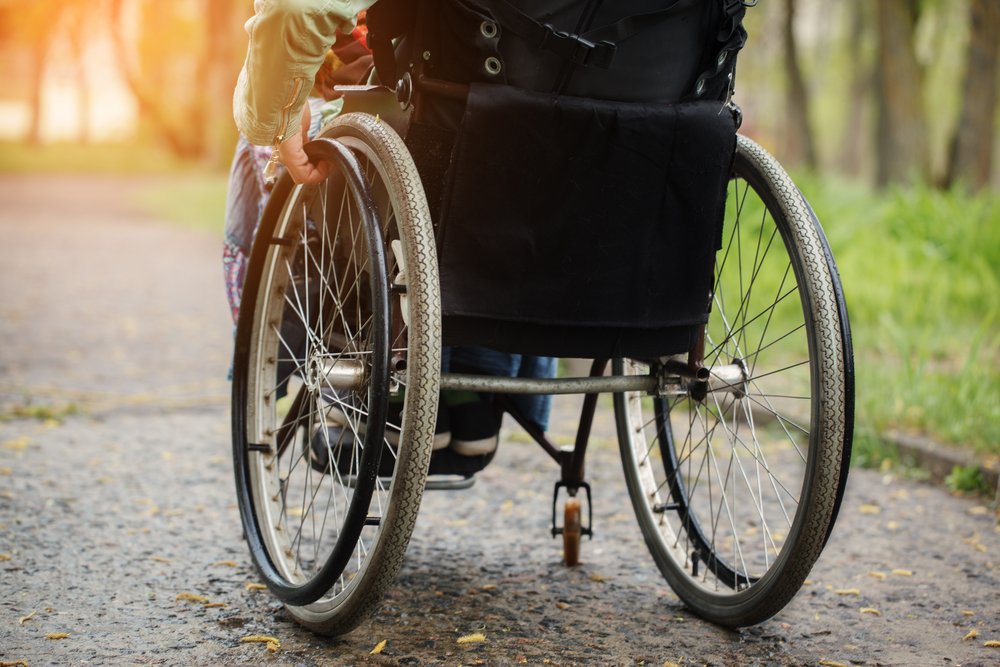Manual Wheelchairs Take About Same Energy as Walking for Youth with CP, Study Says

The energy children and adolescents with cerebral palsy (CP) spend to move on a manual wheelchair is equal to or lesser than that spent on walking in patients with a lower level of disability, a study suggests.
This energy expenditure can be reliably measured by counting the total number of heartbeats during exercise, and better than a metric based on heart rates and velocity.
The study, “A Preliminary Evaluation of Energy Efficiency for Children with Cerebral Palsy for Driving A Manual Wheelchair and Walking: Use of the Total Heart Beat Index,” was published in the journal Developmental Neurorehabilitation.
Cerebral palsy (CP) is the most common form of motor disability in childhood. It can lead to different degrees of physical disabilities, with some children able to walk independently while others need aids such as a wheelchair.
Due to muscle weakness, problems in balance and abnormal gait, a child with CP uses greater effort and spends more energy to walk than a typically developing child.
The few studies assessing energy efficiency — the energy spent to move — have largely focused on children who are able to walk, since walking is seen as a symbol of rehabilitation.
Although little research has focused on the use of manual wheelchairs, some studies in children with disabilities other than CP have suggested that wheelchair users spend less energy than children who are able to walk to travel the same distances.
Researchers at Sapporo Medical University and medical centers in Japan were interested in understanding if this was the case in children with CP.
They conducted a study in 21 children and teenagers with CP (11 males, 10 females; ages 7 to 17) to evaluate the energy efficiency between using a manual wheelchair and walking in these young people. They were also interested in understanding whether the total heart beat index (THBI) — a measure of energy efficiency — was a reliable tool to measure energy efficiency here.
Of note, THBI is calculated as the total number of heartbeats during exercise divided by the total distance traveled, expressed in beats per meter.
Participants were classified as GMFCS levels II, III or IV. GMFCS, or Gross Motor Function Classification System, is a five-level tool used to classify gross mobility skills in young people with CP.
Children classified as level II have difficulty jumping or running but are able to walk independently. They may need hand-held mobility devices or wheeled mobility over long distances. At level III, children walk using a hand-held aid indoors and a wheelchair for long distances; they may walk with aids for shorter distances. At level IV, children are transported in a manual or powered wheelchair at school, outdoors, and in the community. They may walk for short distances at home with physical assistance, however.
To determine the energy spent while moving, participants were asked to move along squares of 10 meters (about 33 feet), using either a manual wheelchair or by walking at self-selected speeds for five minutes. Here, children on level II walked independently (although they used braces or orthoses), while children in levels III and IV used a manual wheelchair.
During the task, participants’ heartbeats were recorded to calculate their THBI. Children at motor disability levels II, III, and IV had 2.75, 1.99 and 3.0 beats/meter, respectively, suggesting that “the energy efficiency of children with CP who use a manual wheelchair in this study was equal to or better than that for walking,” the researchers wrote.
There were, however, significant differences in the THBI observed between patients on GMFCS levels III and IV, indicating that patients on level III wasted less energy than those on level IV. This finding supported suggestions that energy efficiency while using a manual wheelchair depended on the participant’s gross motor skills.
Researchers also found that THBI was a better tool to measure energy efficiency in young CP patients using a manual wheelchair than the Physiological Cost Index (PCI), a metric widely employed that takes into account steady-state and resting heart rates and the velocity of walking.
“Further studies should investigate the relative energy efficiency of walking versus manual wheelchair use for individual patients with different levels of motor impairment,” the researchers concluded.


